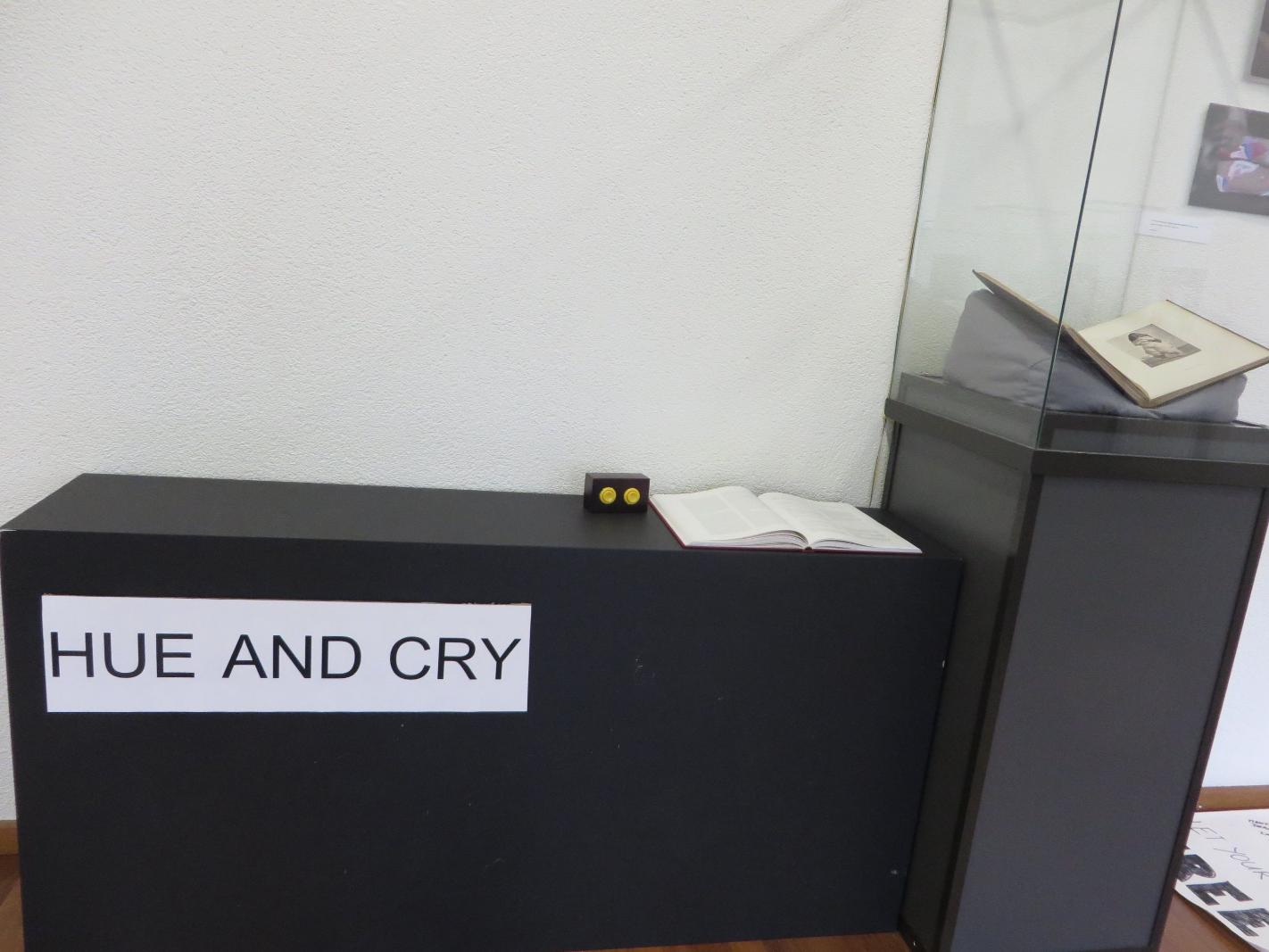Concept of the Exhibition
The exhibit is a threefold visitor experience. When he/she enters the room the first part will draw the attention. Spread out over the wall are copy prints of G.H. Fox’s Iconographie photographique des maladies de la peau. The additional colored paint direct the viewer to the spots were the diseased skin is visible. In stead of horror and fright, the reaction of the public is more positive towards the persons portrayed on the photos. As the marks on the skin has involuntary become an aspect of their personality the focus on the painted parts places these diseases in the context of versiering of the skin. Thus emphasizing the link with tattoos or tribal decorations of the skin. The visitors are in this way not confronted with the disease in the first place but with the personalized aspects of the effects it has on the skin of the individuals.
The second part of the exhibit is the original publication. On the page there is a female patient suffering from a severe case of Elephantitus, a disease causing gross and swollen limbs. Striking, at second view is the unorthodox manner how the photographer disguised her identity. A plain cloth is thrown over her head, accentuating the involuntary way of portraying even more.
In the last stage of the exhibit the visitor itself is confronted with the intruding effect of this form of photography. Unnoticed a camera took a snapshot while looking at the original photo in the showcase. Next to is this picture is displayed in a mock-up anatomical atlas. The difference between now and then is that now the photographed can choose if they want to be exposed or not.
Background:
The basis of this exposition was formed by the persona we created. For whom were we making this? Our persona was a 22 years old male named Michel. He still lives whit his parents though he studies something technical in Delft. He’s a bit on the nerdy side, a gamer and a fierce drone racer. His nickname on diverse online platforms is Dragonflyer22.
IN his childhood years his left left was infected by a anaerobe bacterium that caused his leg to be amputated. Since then he’s in a wheelchair.
The first thing we noted is that the original book in the showcase is way to high to see for him. That’s a bit of a pity because he was dragged by his mum to the museum as a break from shopping for new clothes. He’s been to the Allard Pierson when he was in six grade and found it utterly boring. Under protest he joined his mother now but when he interred this exhibition room his attention is caught by the photos and the unusual painted shapes. He is annoyed when people he meets people the only and first thing they see is his wheelchair. The persons portrayed must have experienced the same. He feels a deep sense of connection. When is mum arrived in the room he bursts out in enthusiasm for this exhibit. Almost exclaiming: This is the best museum I’ve ever been to.
Technology
For the photo frame a camera was connected. An arduino was programmed to set the distance sensor that activates the camera.
Team
Katja Kahana, Charlotte Faber, Lies De Meyer, Cyril Wichers, Bart Grob.
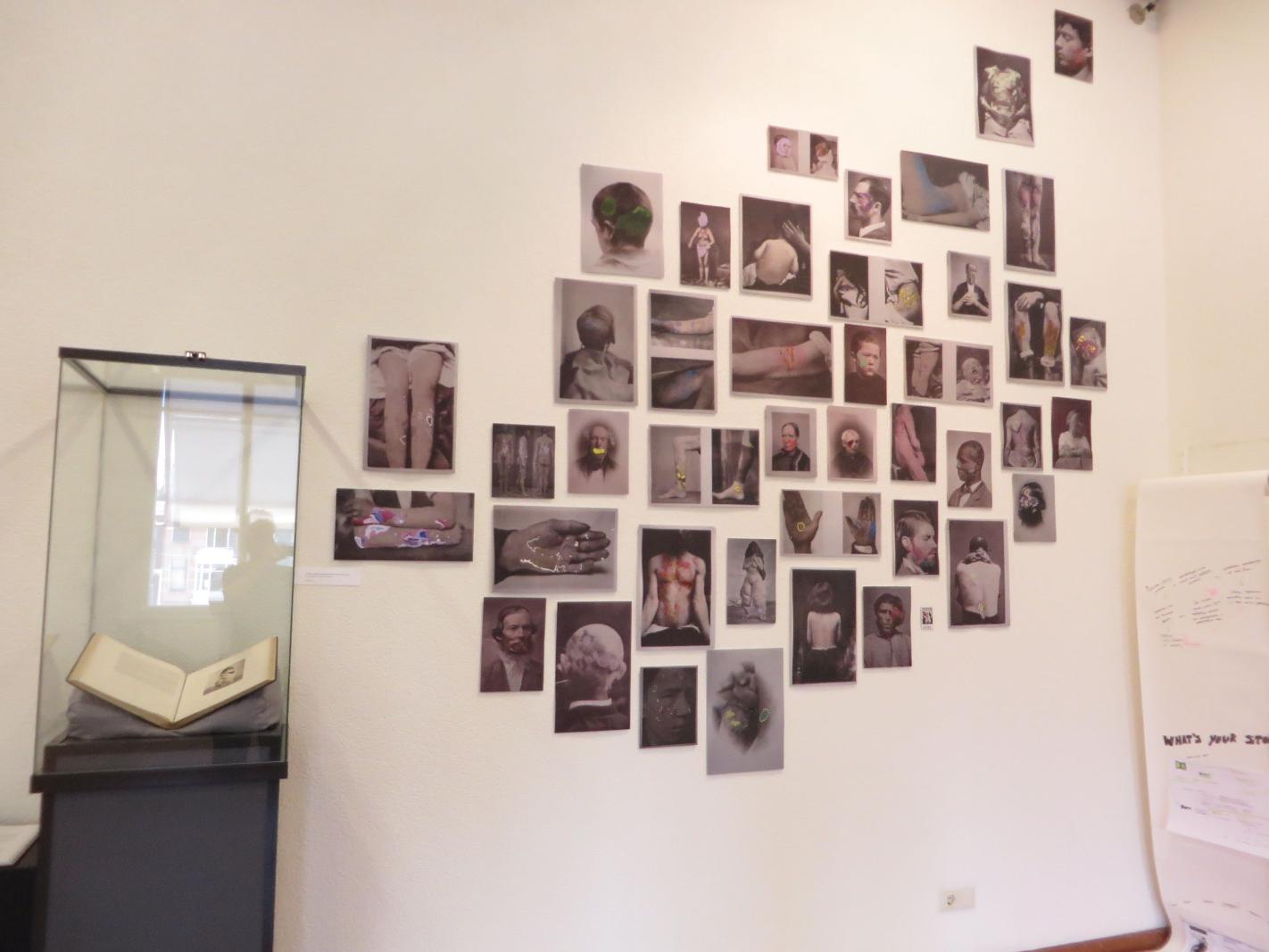

Concepts
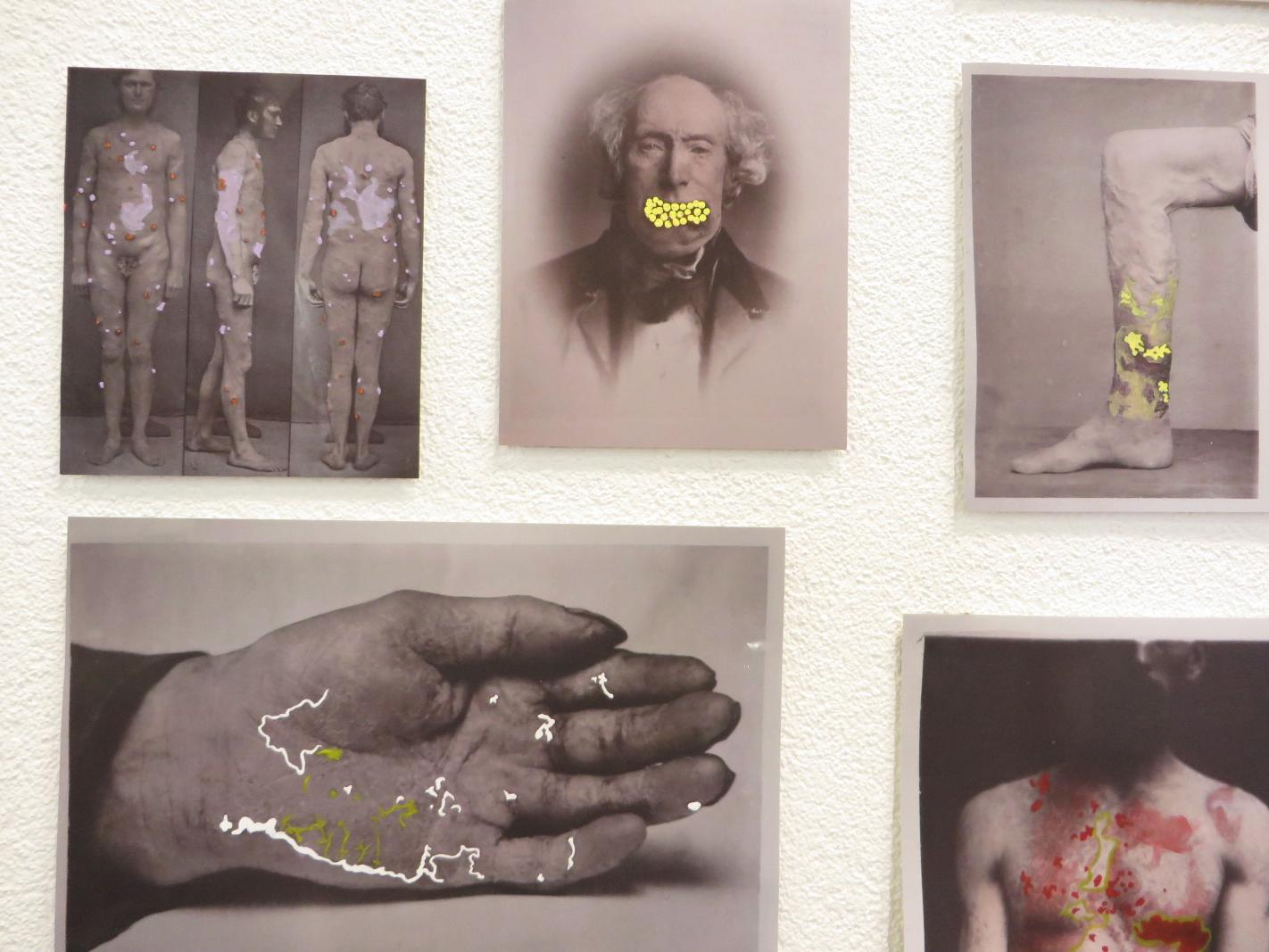

Concepts
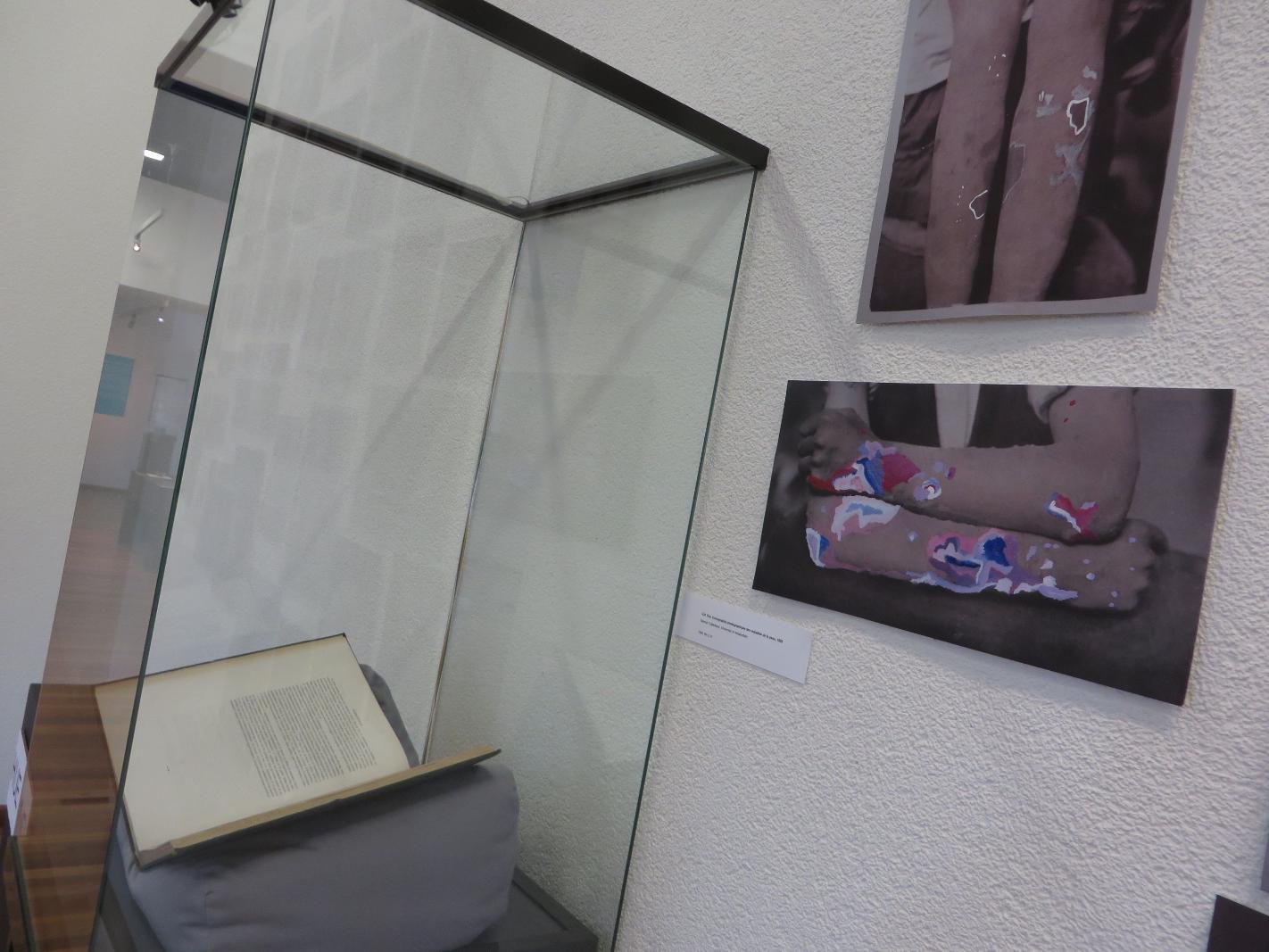

Concepts
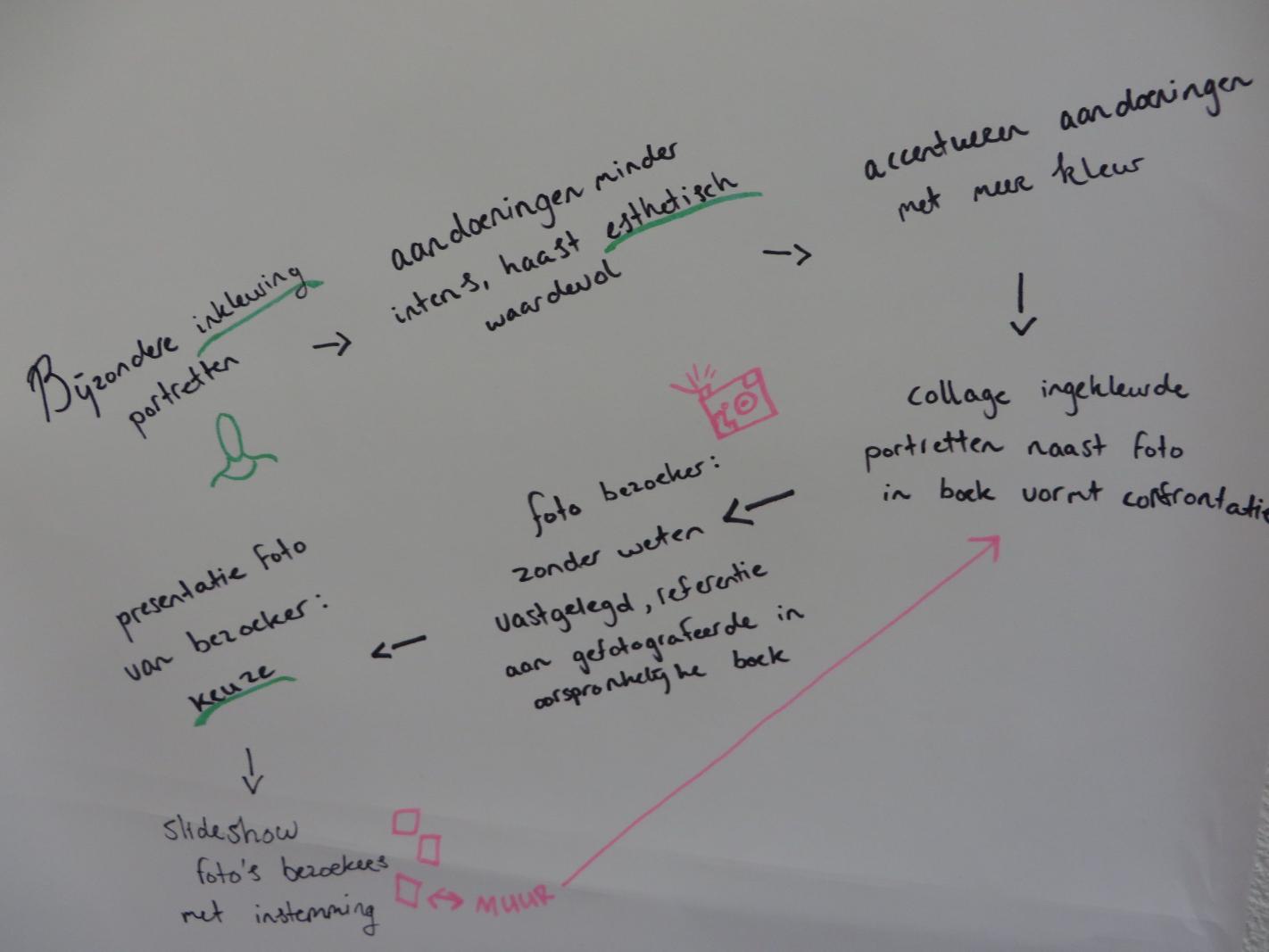

Concepts
